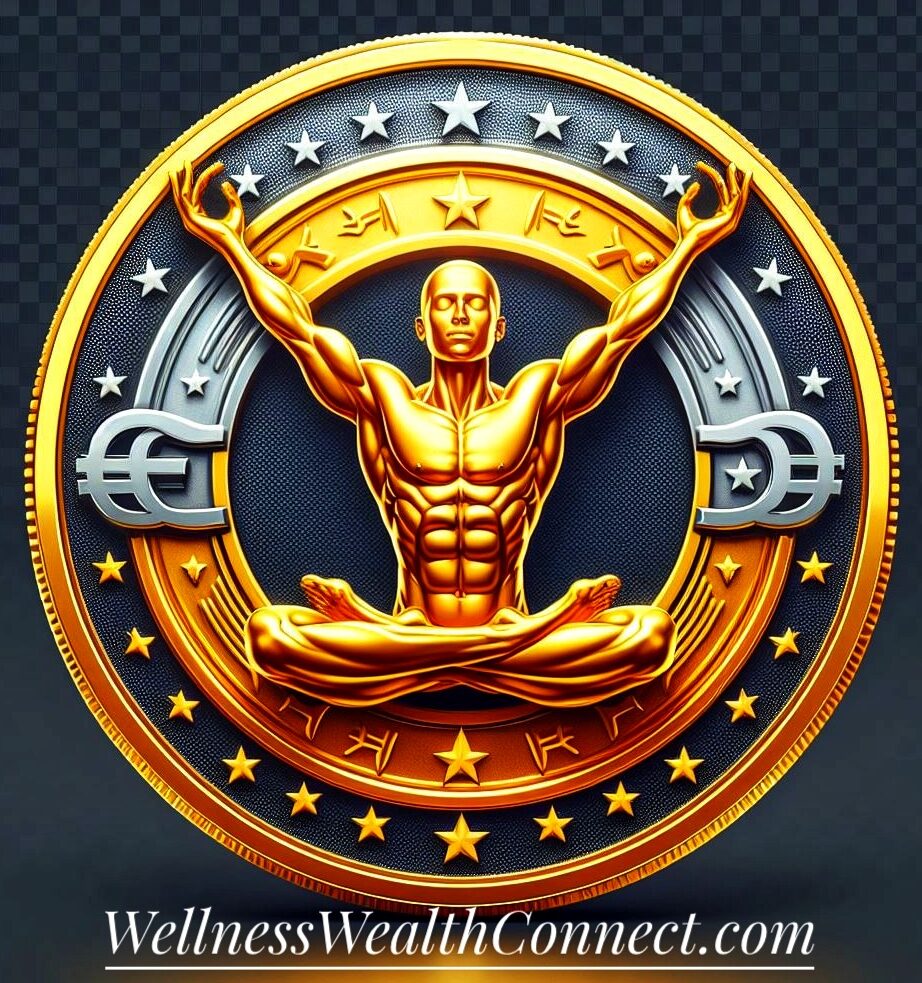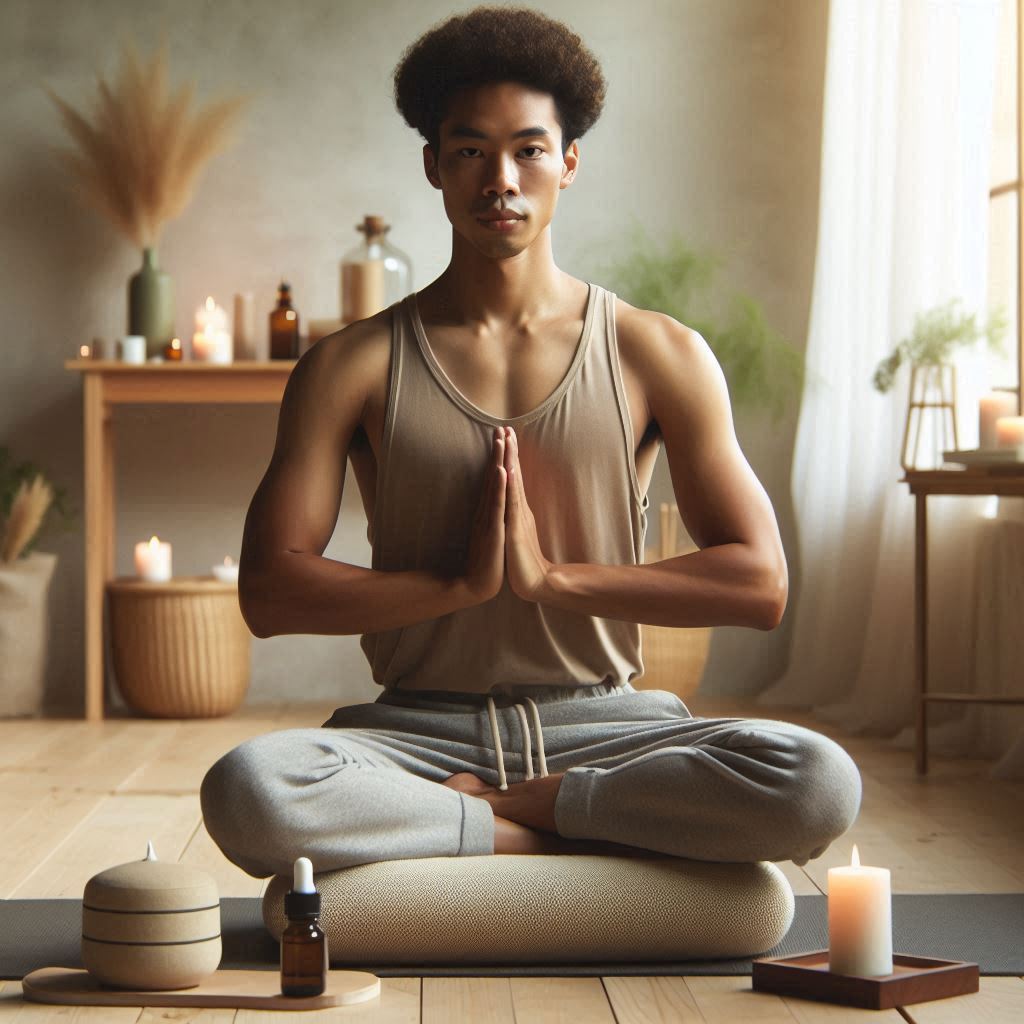Welcome to Wellness Wealth Connect’s comprehensive guide to the top yoga poses for beginners. Whether you’re new to yoga or looking to deepen your practice, these poses offer a great starting point to enhance flexibility, build strength, and promote overall well-being. Each pose is accompanied by a description, benefits, and tips to help you get the most out of your practice.
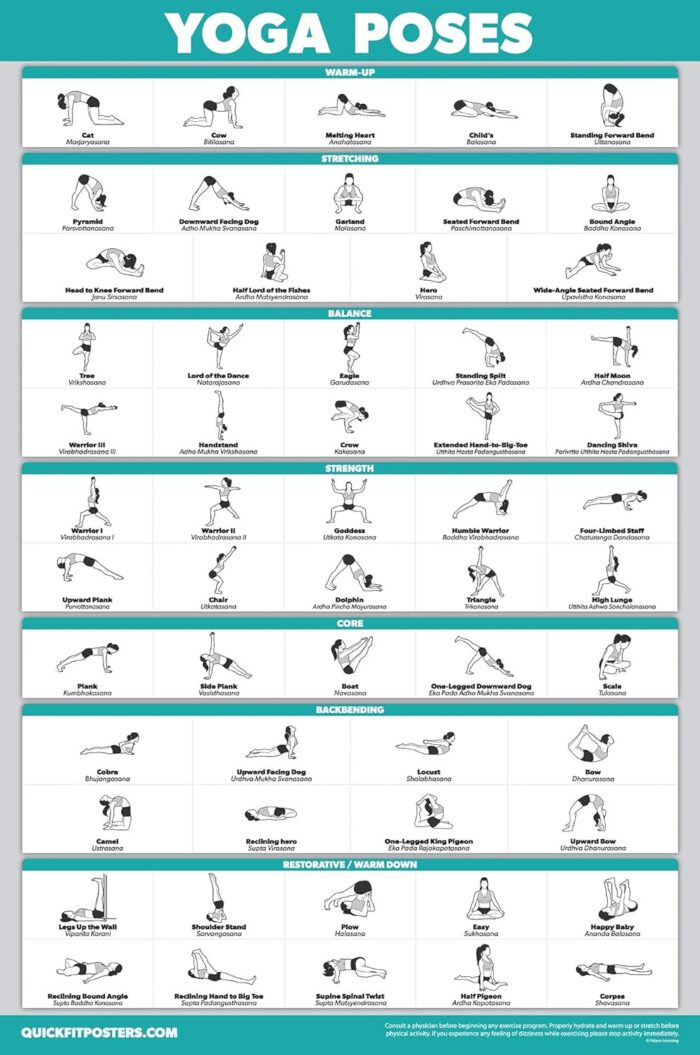
What Are Yoga Poses With Names?
Mountain Pose (Tadasana)
- Description: Stand tall with feet together, shoulders relaxed, and arms at your sides. This pose sets the foundation for proper alignment.
- Benefits: Improves posture, increases body awareness, and strengthens legs.
- Tips: Engage your core and keep your gaze straight ahead.
Downward-Facing Dog (Adho Mukha Svanasana)
- Description: Start on hands and knees, then lift hips upward to form an inverted “V.” Keep hands shoulder-width apart and feet hip-width apart.
- Benefits: Stretches hamstrings and shoulders, strengthens arms and legs.
- Tips: Keep fingers spread wide for stability, and maintain a straight spine.
Child’s Pose (Balasana)
- Description: Kneel on the floor, then sit back on your heels and lower your forehead to the ground with your arms extended forward.
- Benefits: Calms the mind, gently stretches the back and hips.
- Tips: Keep your big toes together and knees apart for comfort.
Warrior I (Virabhadrasana I)
- Description: Step one foot forward, bend the knee, and raise your arms overhead. Keep your back foot angled slightly outwards.
- Benefits: Builds strength in legs and shoulders, enhances focus.
- Tips: Square your hips forward and keep your front knee aligned with your ankle.
Warrior II (Virabhadrasana II)
- Description: From Warrior I, extend arms parallel to the ground and turn head to look over front hand.
- Benefits: Strengthens legs and arms, and improves balance and concentration.
- Tips: Keep shoulders relaxed and hips facing forward.
Triangle Pose (Trikonasana)
- Description: Extend one leg out to the side, reach downward with one hand, and upward with the other, forming a triangle.
- Benefits: Stretches sides, and improves flexibility and balance.
- Tips: Keep your chest open and gaze toward your top hand.
Tree Pose (Vrksasana)
- Description: Stand on one leg, place the foot of the other leg on the inside thigh or calf, and bring your hands to the prayer position.
- Benefits: Improves balance, and strengthens legs and core.
- Tips: Focus on a point to maintain balance and keep your core engaged.
Bridge Pose (Setu Bandhasana)
- Description: Lie on your back, bend your knees, and lift your hips upward while keeping your feet flat on the ground.
- Benefits: Strengthens glutes and lower back, opens the chest.
- Tips: Press into your feet to lift your hips higher and keep your knees hip-width apart.
Seated Forward Bend (Paschimottanasana)
- Description: Sit with your legs extended, then fold forward over your legs, reaching for your feet.
- Benefits: Stretches hamstrings, and calms the mind.
- Tips: Keep your back straight and bend from the hips.
Cobra Pose (Bhujangasana)
- Description: Lie on your stomach, place your hands under your shoulders, and lift your upper body off the ground.
- Benefits: Strengthens the back and arms, and improves spinal flexibility.
- Tips: Keep elbows close to your body and lift your chest upward.
Cat-Cow Pose (Marjaryasana-Bitilasana)
- Description: Start on hands and knees, then alternate between arching your back (cat) and dipping your spine (cow).
- Benefits: Increases spinal flexibility, and relieves tension.
- Tips: Move slowly and synchronize your breath with the movements.
Plank Pose (Kumbhakasana)
- Description: Start in a push-up position, with hands shoulder-width apart and body in a straight line.
- Benefits: Strengthens core, arms, and shoulders.
- Tips: Keep your core engaged and hips aligned with your body.
Half Lord of the Fishes Pose (Ardha Matsyendrasana)
- Description: Sit with one leg crossed over the other, then twist your upper body toward the opposite leg.
- Benefits: Stretches the spine, and improves digestion.
- Tips: Keep your back straight and shoulders relaxed.
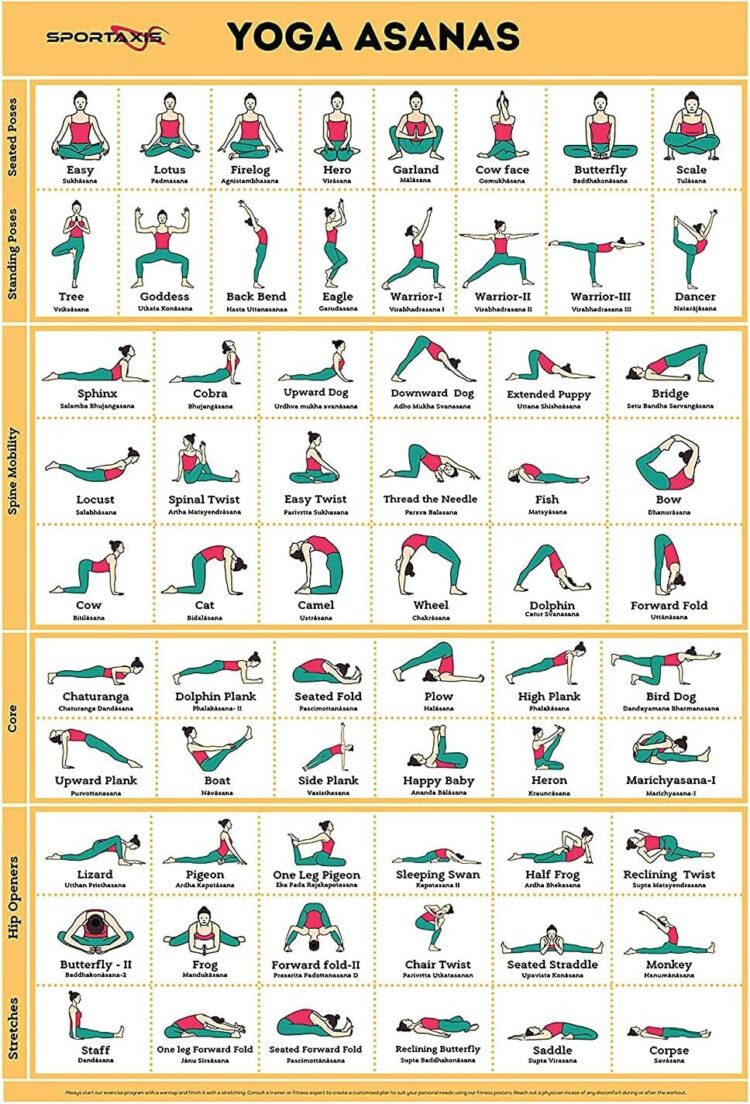
Garland Pose (Malasana)
- Description: Squat down with feet flat on the ground and elbows pressing into your knees.
- Benefits: Opens hips, stretches lower back.
- Tips: Keep your heels down and use your elbows to push your knees outward.
Boat Pose (Navasana)
- Description: Sit with your knees bent, then lift your feet off the ground and extend your arms forward.
- Benefits: Strengthens core and improves balance.
- Tips: Keep your spine straight and use your core for stability.
Camel Pose (Ustrasana)
- Description: Kneel on the ground, then arch backward, reaching for your heels with your hands.
- Benefits: Stretches the chest and shoulders, and strengthens the back.
- Tips: Keep your hips forward and engage your core to avoid straining your back.
Half Moon Pose (Ardha Chandrasana)
- Description: From Warrior II, extend one arm upward and balance on one leg.
- Benefits: Improves balance, and strengthens legs and core.
- Tips: Use a block for support and focus on a point to maintain balance.
Chair Pose (Utkatasana)
- Description: Stand with feet together, bend knees, and raise your arms overhead.
- Benefits: Strengthens legs and core, enhances endurance.
- Tips: Keep weight on your heels and engage your core.
Reclining Bound Angle Pose (Supta Baddha Konasana)
- Description: Lie on your back with the soles of your feet together and your knees dropping outward.
- Benefits: Opens hips, and calms the mind.
- Tips: Use a bolster under your back for added support.
Supported Bridge Pose (Setu Bandhasana with Bolster)
- Description: Lie on your back and place a bolster under your lower back to lift your hips.
- Benefits: Relieves lower back tension, promotes relaxation.
- Tips: Adjust the height of the bolster for comfort.
Pigeon Pose (Kapotasana)
- Description: From Downward-Facing Dog, bring one knee forward and extend the other leg backward.
- Benefits: Stretches hips and thighs, relieves tension.
- Tips: Keep your hips square and use a bolster under your hips for support.
Reclined Twist (Jathara Parivartanasana)
- Description: Lie on your back, bring one knee to your chest, then twist it across your body.
- Benefits: Stretches the spine and relieves tension.
- Tips: Keep your shoulders on the ground and breathe deeply.
Eagle Pose (Garudasana)
- Description: Stand on one leg, wrap the other leg around it, and do the same with your arms.
- Benefits: Improves balance, and strengthens legs and shoulders.
- Tips: Focus on a point to maintain balance and keep your core engaged.
Fish Pose (Matsyasana)
- Description: Lie on your back, arch your chest upward, and support yourself with your elbows.
- Benefits: Stretches the chest and neck, and improves posture.
- Tips: Keep your elbows close to your body and relax your head backward.
Revolved Triangle Pose (Parivrtta Trikonasana)
- Description: From Triangle Pose, twist your upper body and reach for the opposite foot.
- Benefits: Stretches the spine and improves flexibility.
- Tips: Keep your hips square and engage your core.
Happy Baby Pose (Ananda Balasana)
- Description: Lie on your back, bend your knees toward your chest, and grab your feet from the inside.
- Benefits: Relieves lower back tension, and stretches hips.
- Tips: Keep your tailbone on the ground and gently rock side to side for relaxation.
Bow Pose (Dhanurasana)
- Description: Lie on your stomach, bend your knees, and grab your ankles, then lift your chest and legs.
- Benefits: Strengthens the back, and opens the chest.
- Tips: Keep your neck relaxed and lift from your chest, not your head.
Upward-Facing Dog (Urdhva Mukha Svanasana)
- Description: Lie on your stomach, press into your hands, and lift your chest and thighs off the ground.
- Benefits: Strengthens arms and back, improves posture.
- Tips: Keep shoulders down and elbows close to your body.
Locust Pose (Salabhasana)
- Description: Lie on your stomach, lift your chest and legs off the ground, and extend arms backward.
- Benefits: Strengthens the back and core, and improves posture.
- Tips: Keep your neck relaxed and engage your glutes for support.
Revolved Chair Pose (Parivrtta Utkatasana)
- Description: From the Chair Pose, twist your upper body and place one elbow on the opposite knee.
- Benefits: Stretches the spine and improves flexibility.
- Tips: Keep knees aligned and hips squared while twisting.
Standing Forward Bend (Uttanasana)
- Description: Stand with feet hip-width apart, then bend forward and reach toward your toes.
- Benefits: Stretches hamstrings and relieves tension.
- Tips: Keep your knees slightly bent if needed and relax your head and neck.
Extended Side Angle Pose (Utthita Parsvakonasana)
- Description: From Warrior II, extend one arm over your head and reach toward the ground with the other.
- Benefits: Stretches sides and legs, improves balance.
- Tips: Keep your chest open and gaze toward your top hand.
Supported Headstand (Salamba Sirsasana)
- Description: Kneel on the ground, place your forearms on the ground, and interlock your fingers. Slowly lift your legs into the air.
- Benefits: Improves balance, and strengthens core and shoulders.
- Tips: Use a wall for support and keep your core engaged.
Revolved Head-to-Knee Pose (Parivrtta Janu Sirsasana)
- Description: Sit with one leg extended and the other bent. Reach over your head toward the extended leg.
- Benefits: Stretches sides and legs, and improves flexibility.
- Tips: Keep your chest open and engage your core.
Revolved Crescent Lunge (Parivrtta Anjaneyasana)
- Description: From Crescent Lunge, twist your upper body and place one elbow on the opposite knee.
- Benefits: Stretches the spine and improves balance.
- Tips: Keep hips squared and focus on a point to maintain balance.
Standing Split (Urdhva Prasarita Eka Padasana)
- Description: From Standing Forward Bend, lift one leg into the air while keeping the other grounded.
- Benefits: Stretches hamstrings and strengthens legs.
- Tips: Keep your hips squared and reach toward the ground for support.
Supported Shoulderstand (Salamba Sarvangasana)
- Description: Lie on your back, lift your legs, and support your lower back with your hands.
- Benefits: Strengthens core and shoulders, improves circulation.
- Tips: Use a wall for support and keep your legs straight.
Legs-Up-the-Wall Pose (Viparita Karani)
- Description: Lie on your back with your legs extended against a wall.
- Benefits: Relieves leg tension, and promotes relaxation.
- Tips: Use a bolster under your lower back for added comfort.
Upward Plank Pose (Purvottanasana)
- Description: Sit with your legs extended, then lift your hips upward and press into your hands.
- Benefits: Strengthens arms and back, stretches the chest.
- Tips: Keep your shoulders down and neck relaxed.
Supported Fish Pose (Matsyasana with Bolster)
- Description: Lie on your back with a bolster under your upper back to lift your chest.
- Benefits: Stretches chest and shoulders, relieves tension.
- Tips: Keep your neck relaxed and adjust the bolster for comfort.
Supported Savasana (Savasana with Bolster)
- Description: Lie on your back with a bolster under your knees and arms relaxed at your sides.
- Benefits: Promotes relaxation and reduces stress.
- Tips: Keep your eyes closed and focus on deep breathing.
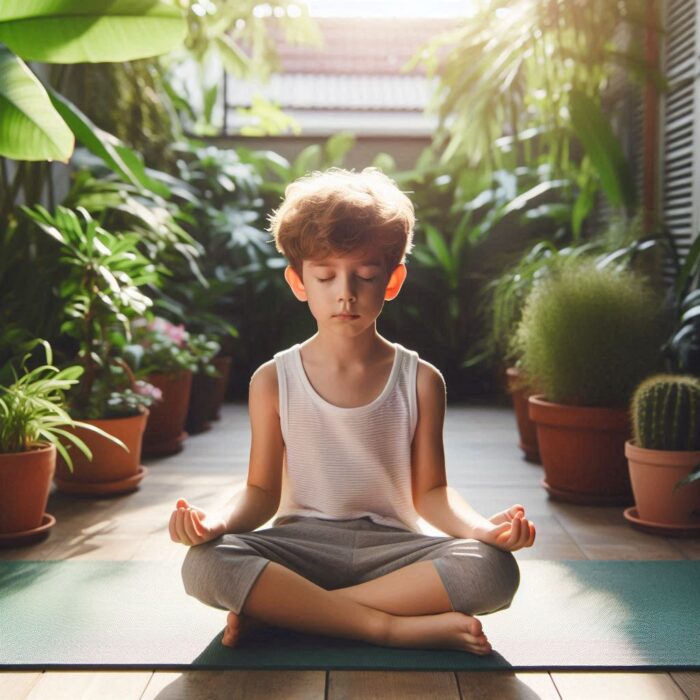
Sphinx Pose (Salamba Bhujangasana)
- Description: Lie on your stomach and prop yourself up on your forearms.
- Benefits: Stretches the back and strengthens the core.
- Tips: Keep shoulders down and elbows close to your body.
Side Plank Pose (Vasisthasana)
- Description: From the Plank Pose, shift weight to one arm and stack legs, lifting the other arm.
- Benefits: Strengthens arms and core, improves balance.
- Tips: Use a knee on the ground for stability and keep your core engaged.
Extended Puppy Pose (Uttana Shishosana)
- Description: From your hands and knees, extend your arms forward and press your chest toward the ground.
- Benefits: Stretches shoulders and back, relieves tension.
- Tips: Keep your hips aligned with your knees and relax your neck.
Revolved Triangle Pose (Parivrtta Trikonasana)
- Description: From Triangle Pose, twist your upper body and reach for the opposite foot.
- Benefits: Stretches spine, and improves flexibility.
- Tips: Keep hips squared and engage your core.
Extended Hand-to-Big-Toe Pose (Utthita Hasta Padangusthasana)
- Description: Stand on one leg and extend the other leg forward, holding your big toe.
- Benefits: Improves balance and strengthens legs.
- Tips: Use a strap for support and focus on a point to maintain balance.
Lotus Pose (Padmasana)
- Description: Sit with legs crossed, placing each foot on the opposite thigh.
- Benefits: Promotes relaxation, and enhances flexibility.
- Tips: Keep your back straight and use a bolster under your hips if needed.
Supported Reclining Bound Angle Pose (Supta Baddha Konasana with Bolster)
- Description: Lie on your back with the soles of your feet together and knees dropping outward, with a bolster under your back.
- Benefits: Opens hips, and promotes relaxation.
- Tips: Adjust the bolster for comfort and keep your shoulders relaxed.
Standing Bow Pose (Dandayamana Dhanurasana)
- Description: Stand on one leg and reach backward to grab your ankle, then extend the other arm forward.
- Benefits: Improves balance and stretches the chest.
- Tips: Focus on a point to maintain balance and engage your core.
Are you seeking relief from shoulder discomfort or aiming to prevent injuries? Look no further than the transformative power of yoga. Yoga, an ancient practice rooted in mindfulness and movement, offers a myriad of poses specifically designed to enhance shoulder health. Whether you’re a seasoned yogi or a beginner, incorporating these essential yoga poses into your practice can promote strength, flexibility, and stability in your shoulders. In this comprehensive guide, we’ll explore three key yoga poses renowned for their ability to unlock shoulder health and improve overall well-being.
Unlock the Secrets of Hyperbolic Stretching: Transform Your Flexibility Beyond Limits!
Essential Yoga Poses:
1. Downward-Facing Dog (Adho Mukha Svanasana)
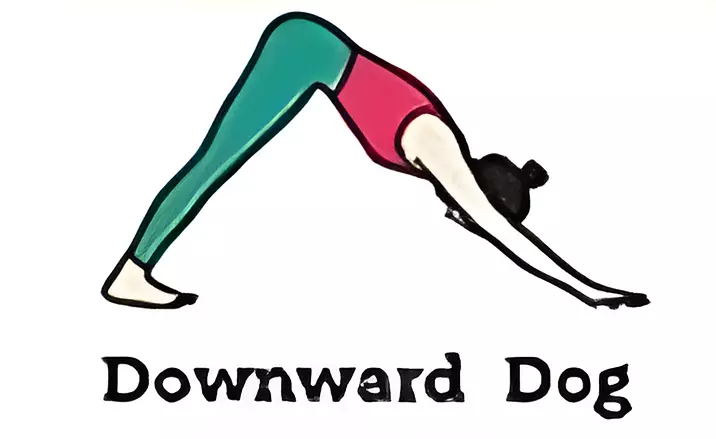
Let’s begin our journey to optimal shoulder health with Downward-Facing Dog, a foundational pose in yoga. This iconic posture not only strengthens the shoulders, arms, and upper back but also elongates the spine and energizes the entire body.
To practice Downward-Facing Dog:
- Start on your hands and knees in a tabletop position, with your wrists aligned under your shoulders and your knees under your hips.
- Exhale as you lift your hips toward the ceiling, straightening your arms and legs to form an inverted V shape.
- Press firmly into your palms and heels while engaging your core muscles.
- Relax your head and neck, allowing them to hang freely between your arms.
- Hold the pose for 5-10 breaths, focusing on lengthening your spine and reaching your heels toward the ground.
Downward-Facing Dog offers a myriad of benefits for shoulder health. By stretching and strengthening the shoulders, arms, and upper back, this pose helps alleviate tension and improve posture. Incorporating Downward-Facing Dog into your daily routine can enhance flexibility, reduce stiffness, and promote a sense of calm and clarity.
2. Extended Puppy Pose (Uttana Shishosana)
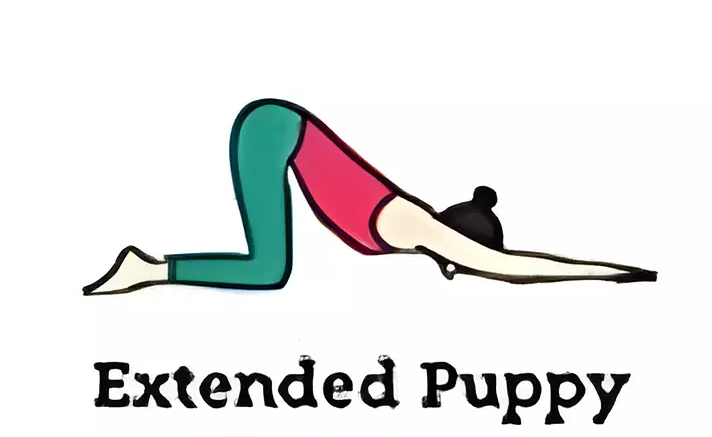
Next, let’s explore the Extended Puppy Pose, a gentle yet powerful posture that releases tension in the shoulders, spine, and neck. This soothing pose is particularly beneficial for beginners and individuals with tight shoulders, offering a safe and effective way to cultivate flexibility and ease discomfort.
To practice Extended Puppy Pose:
- Begin on your hands and knees in a tabletop position, with your wrists aligned under your shoulders and your knees under your hips.
- Walk your hands forward, lowering your chest toward the ground while keeping your hips aligned over your knees.
- Rest your forehead or chin on the mat, allowing your chest to melt toward the floor.
- Extend your arms forward, keeping them shoulder-width apart, and press your palms firmly into the ground.
- Relax your shoulders and breathe deeply into the stretch, feeling a gentle opening across your upper back and shoulders.
Extended Puppy Pose offers a sanctuary for your shoulders, providing a deep stretch that helps alleviate tension and improve mobility. By opening the shoulders, chest, and arms, this pose encourages relaxation and stress relief, promoting a sense of spaciousness and ease in both body and mind.
3. Thread the Needle Pose (Parsva Balasana)
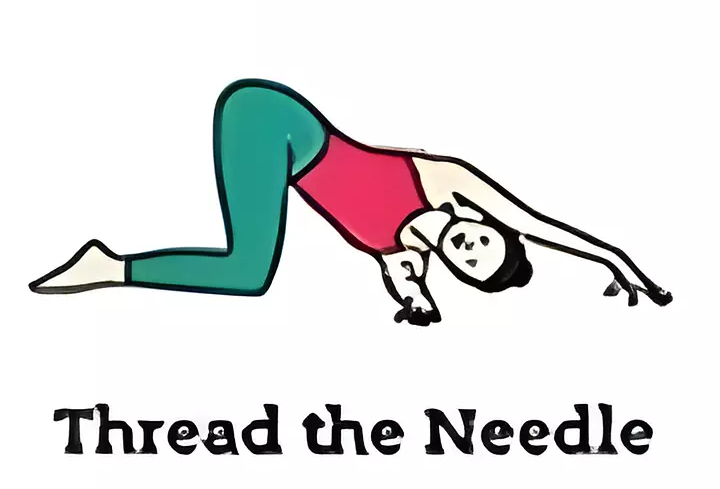
Our final stop on the journey to shoulder health is Thread the Needle Pose, a restorative posture that gently opens the shoulders, chest, and upper back. This soothing pose is ideal for relieving tension and promoting relaxation, making it a valuable addition to any yoga practice.
To practice Thread the Needle Pose:
- Begin on your hands and knees in a tabletop position, with your wrists aligned under your shoulders and your knees under your hips.
- Inhale as you reach your right arm toward the ceiling, opening your chest to the right.
- Exhale as you thread your right arm under your left arm, lowering your right shoulder and ear to the mat.
- Extend your left arm forward, resting your palm on the ground, and gently press into your fingertips.
- Relax your head and neck, allowing gravity to deepen the stretch across your right shoulder and upper back.
- Hold the pose for 5-10 breaths, then repeat on the opposite side.
Thread the Needle Pose offers a sanctuary for your shoulders, providing a gentle yet profound stretch that helps release tension and improve mobility. By opening the shoulders and chest, this pose promotes relaxation and stress relief, inviting a sense of ease and spaciousness into your body and mind.
Incorporating these essential yoga poses into your practice can help unlock shoulder health and cultivate a deeper sense of well-being. Whether you’re seeking relief from discomfort or aiming to prevent injuries, these poses offer a holistic approach to shoulder care that honors the body’s natural wisdom. By embracing the transformative power of yoga, you can discover a newfound sense of strength, flexibility, and balance that radiates from the inside out.
Conclusion
As you embark on your journey to shoulder health, remember to approach your practice with patience, compassion, and mindfulness. Listen to your body’s unique needs and honor its limitations with kindness and grace. By cultivating a consistent yoga practice that prioritizes shoulder health, you can unlock a world of possibilities and experience the profound benefits of holistic well-being.
Unlock the transformative power of yoga and embark on a journey to optimal shoulder health today. Namaste.
